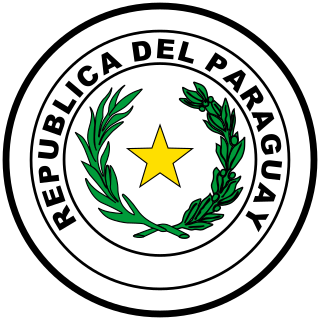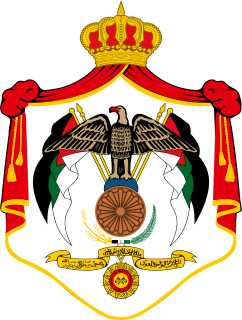
Elections in Antigua and Barbuda take place in the framework of a parliamentary democracy.

Parliamentary elections were held in Austria on 1 March 1970. The result was a victory for the Socialist Party, which won 81 of the 165 seats to become the largest party for the first time in the Second Republic, only two seats short of a majority. Bruno Kreisky of the Social Democrats became Chancellor at the head of a minority government that was tolerated by the Freedom Party of Austria in return for electoral reform that favoured smaller parties. Voter turnout was 91.8%. It was the first Socialist-led government since 1920, and the first purely left-wing government in Austrian history.
Senate elections were held in Greece on 21 April 1929. The Senate was a new institution introduced with the Greek Constitution of 1927 and these were the first elections for it. The result was a victory for the Liberal Party, which won 64 of the 92 seats. It was regarded as a public approval of the policies of Prime Minister Eleftherios Venizelos.

General elections were held in Peru on 9 April 1995, the first under the 1993 constitution. Incumbent President Alberto Fujimori was re-elected with 64% of the vote, whilst his Cambio 90 party won a majority of seats in the newly unicameral Congress.

General elections were held in Mexico on July 6, 1988.

Legislative elections were held in Mexico on 18 August 1991. The Institutional Revolutionary Party won 320 of the 500 seats in the Chamber of Deputies and 61 of the 64 seats in the Senate. Voter turnout was 61% in the Chamber election and 62% in the Senate election.

Folketing elections were held in Denmark on 3 April 1939, except in the Faroe Islands where they were held on 19 April. They followed a dissolution of both chambers in order to call a referendum on changing the constitution. The referendum was held on 23 May but failed due to a low voter turnout. The result of the elections was a victory for the Social Democratic Party, which won 64 of the 149 seats. Voter turnout was 79.2% in Denmark proper and 47.8% in the Faroes.
The Russian Party in Estonia was a minor political party in Estonia.

General elections were held in Paraguay on 27 April 2003. The presidential elections were won by Nicanor Duarte of the Colorado Party, who received 38.3% of the vote. In the Congressional elections, the Colorado Party won 37 of the 80 seats in the Chamber of Deputies and 16 of the 45 seats in the Senate. Voter turnout was 64.3% in the presidential election, 64.2% in the Senate election and 64.1% in the Chamber of Deputies election.

General elections were held in Turkey on 12 October 1969. The electoral system used was party-list proportional representation using the D'Hondt method in 66 electoral districts. The result was a victory for the Justice Party, which won 256 of the 450 seats. Voter turnout was 64.3%.

General elections were held in Bolivia on 1 July 1979. As no candidate in the presidential elections received a majority of the vote, the National Congress was required to elect a President. However, the Congress failed to elect a candidate after three ballots, and instead selected Senate leader Wálter Guevara to serve as Interim President for a year on 8 August. Guevara was later overthrown by a military coup led by Alberto Natusch on 31 October. Fresh elections were held in June 1980.

General elections were held in Jordan on 29 August 1951. As political parties were banned at the time, all candidates ran as independents, although some affiliated with the Jordanian Communist Party, the Ba'ath Party the Arab Constitutional Party and the Umma Party all won seats.

Parliamentary elections were held in Armenia on 20 May 1990, although further rounds were held on 3 June and 15 July due to low turnouts invalidating earlier results and by 21 July 64 seats were still unfilled, with 16 still unfilled in February the following year. The result was a victory for the Communist Party of Armenia, which won 136 of the 259 seats. The remaining candidates were all officially independents, but almost all were members of the Pan-Armenian National Movement. Overall voter turnout was 60.2%.

General elections were held in Cambodia on 1 September 1946. The Democratic Party won 50 of the 67 seats, with voter turnout estimated to be 60%.

General elections were held in Mexico on 4 July 1982. The presidential elections were won by Miguel de la Madrid, who received 74.3% of the vote. In the Chamber of Deputies election, the Institutional Revolutionary Party won 299 of the 372 seats, as well as winning 63 of the 64 seats in the Senate election. Voter turnout was 74.8% in the presidential election and 72.6% and 66.4% for the two parts of the Chamber elections.

General elections were held in Suriname on 25 May 1991. The result was a victory for the New Front for Democracy and Development, which won 30 of the 51 seats. Voter turnout was 64.3%.

Senate elections were held in Belgium on 27 September 1851. The snap elections were called by Royal Order on 4 September. The Liberal Party and Catholics won 27 seats each. Voter turnout was 64.0%, although only 79,296 people were eligible to vote.

Parliamentary elections were held in Brazil on 15 November 1970. The result was a victory for the National Renewal Alliance Party, which won 223 of the 310 seats in the Chamber of Deputies and 40 of the 46 seats in the Senate. Voter turnout was 77.5% in the Chamber of Deputies election.

General elections were held in Brazil on 3 October 1994. The presidential elections were won by Fernando Henrique Cardoso of the Brazilian Social Democracy Party, who received 54.3% of the vote. Cardoso won the election by a margin of 27.3%, the largest in Brazilian history to date, and the first of his two landslide victories. The Brazilian Democratic Movement Party remained the largest party in the Chamber of Deputies and the Senate.

Parliamentary elections were held in Colombia on 27 October 1991 to elect the Senate and Chamber of Representatives. The result was a victory for the Liberal Party, which won 87 of the 161 seats in the Chamber and 56 of the 102 seats in the Senate.






















